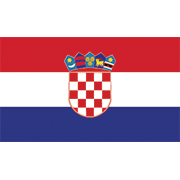Fiscal subject related
General information
Each invoice goes through a series of steps, from issuance to archiving. The European Union has identified eight universal steps on the seller's and buyer's sides that, by introducing an electronic invoice, can be fully digitized and, with savings, enable better management of financial operations. This will generally have a positive effect on increasing competitiveness and labor productivity. Internal procedures and the level of automation may vary from company to company.
Following the successful implementation of the requirement for public purchasers to use eInvoices in public procurement processes, the European Union plans to introduce the same requirement in the business-to-business (B2B) common market by amending Directive 2006/112/EC with regard to the rules on VAT for the digital age. As part of the Fiscalization 2.0 project, which is carried out by the Tax Administration using resources from the National Recovery and Resilience Plan, the Republic of Croatia is getting ready for the new rule. By the end of 2024, it is hoped that the project will have established a cashless payment system through eInvoice in the B2B (Business to Business) sector with an integrated e-archive and active, distinctive, and cutting-edge online bookkeeping in the VAT system.
A little over 40% of respondents presently utilize eAccount in their business operations, according to the situation study conducted by the Tax Administration as part of the project on a sample of 15,200 business organizations. The research's findings reveal a considerable size segmentation, with large and medium-sized organizations leading the way in the use of eInvoices, where more than two thirds (75 percent) have automated the exchange of invoices. eAccount is utilized by more than half of respondents (61%) in the small business category, but it is used the least by microbusinesses and self-employed businesses, where that proportion is below 30%.
Other news from Croatia
Mandatory e-Invoicing from in Croatia starting January 1, 2026
 Croatia
Author: Vukašin Santo
Croatia
Author: Vukašin Santo
Croatia is introducing Fiscalization 2.0 from 1 January 2026, making mandatory e-invoicing (eRačun) the foundation of a fully digital, real-time tax reporting system with automatic fiscalization embedded in the invoice flow. The reform will be implemented in phases, requiring all VAT-registered businesses to issue and receive eRačuni by 2026 (with non-VAT taxpayers initially required to receive th... Read more



Croatia Introduces Serious Legal Consequences for Using Software that Circumvents Fiscalization Procedures
 Croatia
Author: Vukašin Santo
Croatia
Author: Vukašin Santo
The Tax Administration is intensifying supervision of cash receipt issuance and fiscalization, including checks of mandatory receipt elements and the software used at points of sale. The use of software designed to bypass fiscalization may trigger criminal liability for both software providers and taxpayers, with authorities warning that only compliant solutions should be used, as unissued receipt... Read more



Croatia Introduces Changes to VAT Cash Accounting Procedure Effective 1 January 2026
 Croatia
Author: Vukašin Santo
Croatia
Author: Vukašin Santo
Taxable persons established in Croatia with 2025 annual supplies not exceeding EUR 2,000,000 may opt to apply the VAT cash accounting scheme from 1 January 2026, provided they notify the Tax Administration by 31 December 2025. Once opted in, the scheme must be applied for at least three years, with VAT accounted for upon receipt of payment and input VAT deductible only after the supplier’s invoice... Read more



Croatia Introduces New Rules on Receipt-Issuiung Exemptions
 Croatia
Author: Vukašin Santo
Croatia
Author: Vukašin Santo
As of 1 January 2026, the exemption from issuing receipts for retailers predominantly selling newspapers, tobacco products, stamps, and postal valuables is abolished, making fiscal receipt issuance mandatory. The amendment leaves existing exclusions unchanged for activities such as gambling, vending machine sales, and certain direct agricultural sales under Article 64(1) of the General Tax Act. Ef... Read more



Customs Authority in Croatia Clarifies Rules for Non-EU Online Purchases and E-Commerce Imports
 Croatia
Author: Vukašin Santo
Croatia
Author: Vukašin Santo
The Customs Administration has issued key clarifications on customs procedures for goods purchased online from non-EU countries, responding to the rapid growth of cross-border e-commerce and consumer protection concerns. These clarifications are published as a comprehensive FAQ addressing customs declarations, duties and VAT, courier authorisations, simplifications for low-value and private shipme... Read more



The Croatian Tax and Customs Administration Launches Intensified Monitoring Ahead of the Holiday Season
 Croatia
Author: Vukašin Santo
Croatia
Author: Vukašin Santo
The Croatian Tax and Customs Administration will intensify nationwide monitoring from 29 November 2025 to 7 January 2026, focusing on cash-based businesses and using real-time fiscalization data for targeted inspections. Authorities aim to detect non-compliance, enforce strict receipt-issuance rules, and encourage citizens to report irregularities to protect fair market competition. The Ministry o... Read more



Fiscalization 2.0: New Consolidated Guide Unifies All Test Environment Information for Upcoming System Changes
 Croatia
Author: Vukašin Santo
Croatia
Author: Vukašin Santo
A new consolidated document now brings together all available information on existing and planned test environments for Fiscalization 2.0, giving stakeholders a single, structured reference point. It outlines current capabilities and upcoming features to help businesses plan system adjustments and prepare efficiently for the new fiscalization requirements A consolidated document has been released... Read more


